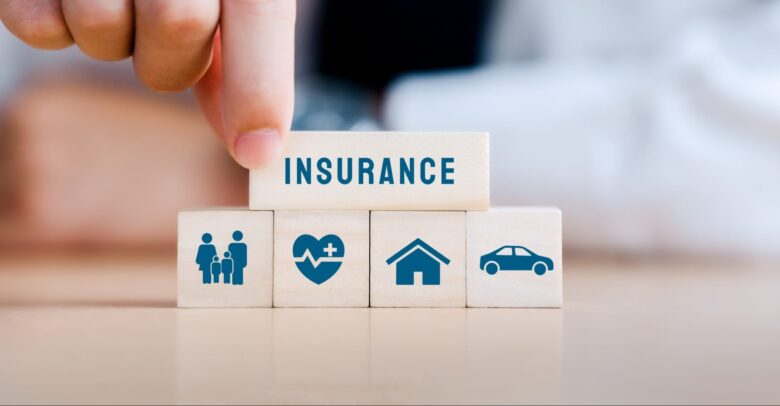Microinsurance is a growing segment of the insurance industry that helps low-income individuals and families obtain affordable insurance, especially in developing countries. Its purpose is to protect vulnerable people from financial hardship caused by not knowing what will happen to their health, life, disability, property, and other assets. This article discusses what microinsurance is, what its benefits are, how it works, and why it is so important to help achieve financial inclusion and security for those who may not have access to insurance through traditional channels.
1. What Is Microinsurance?
Microinsurance is a type of insurance designed to help people with low incomes or other financial difficulties obtain small amounts of insurance. It typically has lower premiums, limited coverage, and easy-to-understand policy terms. This makes it more reasonable and available to those who cannot afford regular insurance. Whether it is health insurance, life insurance, crop insurance, or property insurance, these plans are usually designed to meet the needs of the target group. Microinsurance is designed to protect people who are most likely to be affected by sudden economic changes, natural disasters, or health problems.
2. Why Microinsurance is Important
Microinsurance is an important way to give more people access to finance, especially in poor countries where many people do not know what insurance is or cannot afford it. Microinsurance fills this gap, giving low-income households access to affordable goods. Without insurance, many people would have to pay for everything themselves if something bad happened. This could make them poorer or cause them to lose their assets. Microinsurance can reduce these risks, giving you peace of mind and financial security.
3. How Does Microinsurance Work?
Microinsurance plans are generally simple, inexpensive, and easy to understand. Premiums are usually lower and policy amounts are smaller to make them affordable for low-income families. Microinsurance is often offered through new and creative means, such as mobile phones, community groups, or partnerships with microfinance institutions. This makes it easier to reach out to people who live in remote areas or don’t have access to regular insurance agents or brokers.
The claims process for microinsurance has also been streamlined to ensure that users with limited resources can still access it. Insurers often work closely with local agents or community leaders to help customers file claims and receive benefits. Claim payouts are often small, but enough to cover basic needs or help people get back on their feet after an accident.
4. Benefits of Microinsurance
Insurance coverage is budget-friendly: Small insurance policies are cheap for low-income families. Premiums are usually very low, sometimes as little as a few dollars a month. This means that people who would normally not be able to get regular insurance can get it.
Financial protection: Microinsurance provides people with a safety net in case something bad happens, such as an illness, an accident, or a natural disaster. For a small fee, policyholders can access funds to help cover their expenses and alleviate the financial stress of such an event.
Promotes savings and smart money management: Microinsurance helps low-income families plan for the future and save for emergencies by protecting them from sudden changes in their finances. Microinsurance is sometimes coupled with savings products, which can help people become more stable over time.
Encourage financial inclusion: One of the main goals of microinsurance is to provide insurance to people who typically do not have access to the formal financial system. Microinsurance helps people access finance and provides them with the resources they need to better manage their risks by offering them low-cost insurance options.
Helps the economy grow: Microinsurance can help the economy grow by protecting vulnerable groups from the financial consequences of bad things that happen. It helps families recover more quickly after illness, accidents, or natural disasters, so they can continue to work and support local businesses.
5. Issues and Limitations of Microinsurance
Microinsurance has many advantages, but it also has some problems. One of the biggest problems is ensuring that the cargo lasts long and makes money for the insurance company. If premiums are low and payouts are small, it can be difficult for the insurance company to cover administrative costs. This is especially true in areas where poverty or risk is higher. Another reason for low demand is that many people in the target area may not fully understand the value of insurance or may be hesitant to purchase it.
Another problem is that some areas lack adequate facilities and medical care, which can make it difficult for insurance companies to provide adequate coverage. In rural areas, it can be difficult to get to a hospital or clinic, and microinsurance for health care may not protect everyone well.
6. The Future of Microinsurance
Microinsurance has a bright future thanks to technological advances and new relationships with mobile service providers, microfinance institutions, and NGOs. As mobile phone use increases in developing countries, more and more insurance companies are offering microinsurance that can be purchased and managed via mobile apps. This makes it easier for low-income families to get coverage. Microinsurance is becoming increasingly popular as a way to protect finances, and these new ideas help to remove some of the barriers that prevent people from accessing it.
Conclusion
Microinsurance is an important way to help low-income families and people get insurance at an affordable price. It protects their finances if the unexpected happens. Microinsurance protects the financial well-being of vulnerable people and reduces the risk of unexpected events. This can be health insurance, life insurance, property insurance, or agricultural insurance. There are still some questions, particularly about the duration and ease of access, but the continued growth of microinsurance is a positive step towards greater financial inclusion and providing a safety net for the world’s most vulnerable people. As the insurance industry continues to come up with new ideas, microinsurance can reach more people and play a bigger role in protecting the world’s finances.
FAQs
1. How do I get microinsurance?
Microinsurance can be purchased through community groups, mobile apps, or relationships with microfinance institutions. The process is often expedited to make it easier for people who don’t have access to much technology or banking services.
2. How does microinsurance work?
Microinsurance works by offering low-cost plans to individuals or groups. Typically, the cost is low and the payments are small and easy to manage. Microinsurance is often sold through mobile apps, community groups, or microfinance institutions. The claims process is streamlined to make it easier for people to file a claim.
3. What types of insurance does microinsurance cover?
Microinsurance covers a wide variety of things, including health insurance, life insurance, crop or agricultural insurance, and property insurance. Insurance options are designed to meet the needs of low-income people and protect them financially from common risks such as illness, accidents, and natural disasters.
4. Is microinsurance only available in poor countries?
Microinsurance was originally offered to low-income people in poor countries, but similar ideas have now spread to other parts of the world. This is especially useful in places where regular insurance is difficult or too expensive.
5. Who does microinsurance help?
Microinsurance most often helps low-income people, farmers, and people living in rural or disadvantaged areas. Microinsurance is an important way for these groups to protect their finances because traditional insurance is often too expensive or difficult to obtain.




